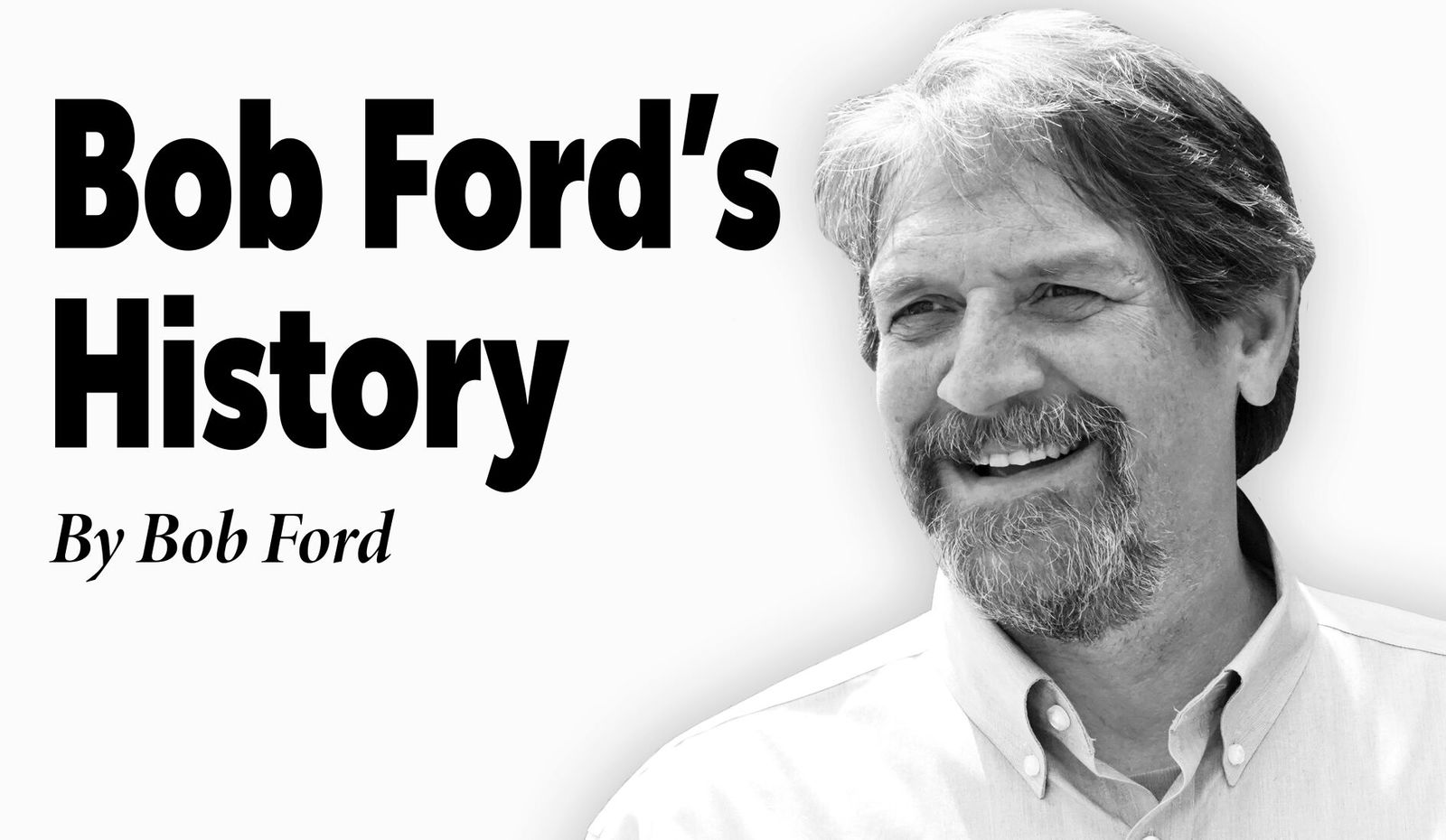MU vs KU: Where the problems all began!

By Bob Ford Special to
Articles and podcasts are complimentary from those helping preserve our history: Nodaway Valley Bank, Eagle Communications, Hughes Chiropractic, The Hearing Connection and Anonymous Buffs. To comment or join in supporting this 503©(3) organization, contact Bob at robertmford@aol.com.
In 1860, Osceola, Missouri, was the third largest city in the state, right behind St Louis and St. Joseph. It was a thriving trading center located on the navigable Osage River, 60 miles east of the Kansas line.
An 1861 newspaper editor described his town this way:
“Osceola has better hotels, more accommodating landlords, prettier women, handsomer men, faster horses, meaner weather, more business, better whiskey, lighter beer and ale but fewer churches, schools and church goin’ people than any other place in the state other than St. Louis.”
“It was a wide open town,” so says old friend and city clerk Lila Foster.
Because of the city’s success, it was a target. Life in the early 1860s in Missouri was treacherous at best, with Kansas Jayhawks and Missouri Bushwackers raiding, murdering and plundering homes and communities.
Jim Lane was a Jayhawk leader trying to forcefully guide Kansas into the Union as a free state, whereas the senator from Missouri, Osceola’s own Waldo Johnson, was a staunch advocate of the institution of slavery and wanted Kansas to enter as a pro-slave state.
The expansion of slavery into new territories was the most divisive issue in our country’s history since we became a country.
Lane and Johnson’s personal feud may had been the catalyst for the barbaric assault on Osceola by Lane and his Jayhawks on Sept. 23, 1861.
Raiding parties from both sides had been ravaging communities for years, with the Union Army headquartered at Fort Leavenworth trying to control the chaos, think “The Outlaw Josey Wales” and/or “Ride with the Devil.”
The attack on Osceola would raise the bar of violence to a new level. Missouri had a split allegiance, meaning information about actions and whereabouts of both marauding groups was out there.
Minutes before Lane attacked with 1,500 crazed raiders headed their way, the city quickly hid $150,000 from the banks in a cornfield, so says local historian Rick Reed.
The Jayhawks charged and encircled the town, capturing most, then proceeded to plunder each business. They took all day, drinking, bullying and stealing anything of value … but where was the bank money?
Still, after individuals were beaten and tormented, no one gave up the whereabouts of the cash.
Lane decided, right then and there to perform a “Drumhead Court Trial,” charging 12 men of the community with treason, or to be more precise, not telling him where the money was hidden.
All 12 were found guilty, with the now Judge Lane sentencing each to be executed. A firing squad was assembled and nine men died in the street that afternoon while the others were mercifully wounded.
Lane’s men had been working hard all day, guzzling, looting and terrorizing. As they loaded their stolen wagons and carriages with the spoils, some “red legs,” were so drunk they couldn’t get on their horses, instead having to climb in the back bed of their confiscated wagon.
Then they torched the city.
A few have said it was an accident, liquor and molasses had been flowing in the streets.
“It was no mistake,” Rick said emphatically. “They knew exactly what they were doing.”
At day’s end, 800 buildings had burned to the ground with just three standing.
The city was leveled … back to Kansas the Jayhawkers went, having freed 200 slaves and stealing a piano for Lane. They stole supplies from every store, along with 350 horses, 400 head of cattle and 3,000 bags of flour … the town was decimated.
In 1860, Osceola had well over 2,000 residents, five years later it stood at 183 and today, 980 proud citizens call it home.
The city never recovered.
One year after the raid, in the depths of the Civil War, equally ruthless Capt. William C. Quantrill attacked Lawrence, Kansas, with 300 vengeful Bushwackers, many chanting “remember Osceola,” as they entered the city.
On that morning of Aug. 21, 1862, Quantrill raised the violence bar to an even higher level, murdering 150 unarmed men and boys.
The two sides were out of control with retaliation and cruelty reigning. Families and communities were destroyed in a cycle of ongoing savagery never seen before in America.
Many moons ago I got a call from a Wall Street Journal reporter, Mizzou was rated No. 1 and KU No. 2 in the BCS football poll that season.
His question was simple, “what makes the KU-MU rivalry different then say, from Michigan-Ohio State or Auburn-Alabama?”
Well, I was only too happy to fill him in.
“Our states had an open conflict called the Border War. We were attacking each other in a brutal way never seen before in the United States over the expansion of slavery. The oddity and what made the conflict so personal was it involved neighbor against neighbor in both states. People who had deep-seated passions and beliefs acted upon them with violence or support.”
When the Civil War was over, the fervor between Kansas and Missouri continued. People who lived through those days were reluctant to talk about it and didn’t pass many of the stories on, but a few did.
The historic dislike for one another was rekindled when the two state universities started playing each other in sports. In the early 1900s when the schools first played basketball, they separated the fans with barbed wire!
To this day, many students don’t know why there is such animosity between the schools. Much of the truth and uncomfortable history has been suppressed.
I ask why these natural rivals don’t play one another in the major sports now? One reason perhaps is the “powers-that-be” at both universities aren’t from Eastern Kansas or Western Missouri.
The days of growing up sitting on your grandfather’s knee hearing stories are missing.
I loathe people that deny history and won’t let me print what I think of the people that ignore it.
It’s our duty to pay tribute to our ancestors by recounting the truth about the sometimes agonizing past. To remember, honor, learn and move on with knowledge is the way a society progresses, not rewriting or disregarding.
I like our tagline, “we are keeping history alive so you can pass it on!”
Now let’s play ball!

